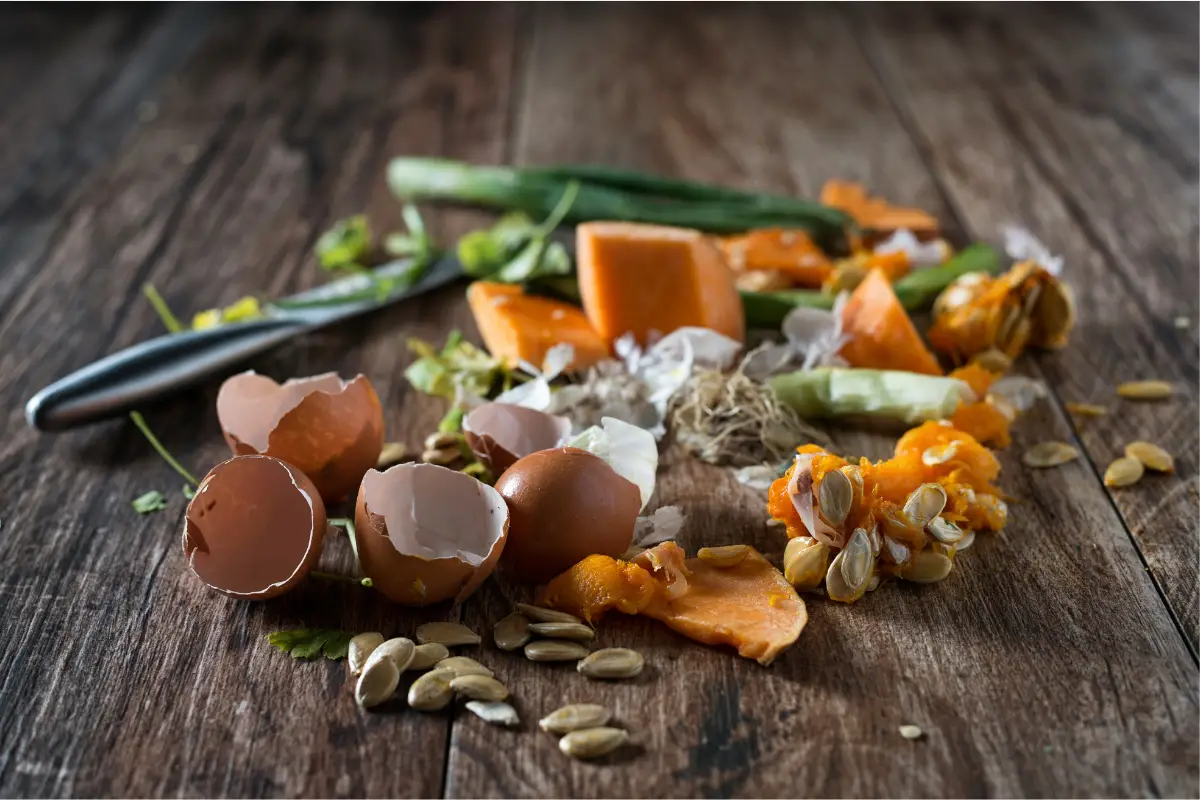Reduce your food footprint with these 10 easy, eco-friendly cooking hacks
Have you shifted to an electric car or even substituted an e-bike for your mini-van? Awesome! What about installing solar panels on the roof or your home? Fantastic.
Those are great steps to decrease your family’s environmental impact, but it is understandable that not everyone can afford a Tesla or realistically replace their car with an e-bike – as much as I would love to, I can’t easily transport my three kids on my e-bike – my 12 year-old is as tall as me!

But food is something we all buy, prepare and eat on regular basis. So, what about the effects on the planet of the food we eat three times a day?
Since roughly one-quarter of North American families’ greenhouse gas emissions are related to our meals, that is an area where I believe we can make a difference.
For some inspiration, I turned to my friend Brigitte* who is far more organised than I am. She came up with 10-eco friendly habit tweaks that will help us to reduce our food footprint.
I hope you enjoy her tips as much as I did!
Plan your meals and stick to your grocery list
We feed our garbage trucks almost as much as we feed our families: 40% of the US food supply is wasted every year! The best way to avoid wasting food is not to buy it in the first place. If you go shopping without a plan for the week, you’re bound to buy too much, including precious produce that will wilt and rot before you get to cook it.
To reduce your food footprint (and save money), start by surveying what’s already in your kitchen: the perishables in your fridge and interesting grains and seasonings in your pantry. Jot down meal ideas for the first few days of the week based on those.
Then, fill in the blanks with simple meals you know you have a chance of actually cooking even when you feel tired toward the end of the week. Build your grocery list based on your meal plan, adding breakfast and lunch items plus pantry ingredients that are running low.
When you go to the store with your list in hand, you’ll be much less tempted to buy appealing veggies you don’t have a plan for. Meal planning beginner? Download a printable template to get started.
Make your own plant milk
Boxed milk is ridiculously heavy, and mostly water. In addition to making it easier to carry your groceries home, this hack will reduce your packaging and carbon footprints.

Plus, by making your own plant milk, you’ll bypass the emissions and pollution associated with cow’s milk. All you need is some nuts or seeds and a blender.
- For baked goods and porridge, I just add approximately 1/4 cup of nuts or seeds (pumpkin and hemp seeds are my favorites) to 7/8 cups water in the blender, processing until completely smooth. It even works with cooked rice or white beans, using the same proportions.
- For drinking, coffee, or adding to cold cereal, I prefer blended raw cashews (no straining necessary). Almonds or oats work well if you strain them through a layer of cotton or a purpose-made mesh bag. (Keep the leftover pulp and add to cookies, pancakes, or muffins.) Add a date to make it slightly sweet.
Pro tip: if using in coffee, pour the milk first to avoid curdling.
If you don’t have a powerful blender, you will get better results from soaking the nuts or seeds for an hour or two before blending.
Try these great swaps for ground beef
Cutting back on red meat is the easiest way to reduce your food footprint. The alternatives are better for your health, too! Of course, there are ready-made beef-like crumbles you can buy, but whole foods options abound.
Adding cooked and drained black or French “de Puy” lentils to your spaghetti sauce will perfectly mimic the texture of ground beef. If you have a little more time, I recommend trying this great tofu bolognese recipe.
For tacos and burritos, what about a mixture of crumbled and sautéed walnuts and sunflower seeds? I love to add cauliflower to the mixture for extra veggies.
Stop peeling root veggies
Even the laziest cook can reduce their food footprint with this hack: don’t let the peels of carrots, potatoes, and yams go to waste!

Just dunk them in cold water and give them a good brush to remove stray bits of dirt – it’s faster than peeling.
Plus, preserving the brightly colored skins of some root veggies like sweet potatoes will boost your intake of antioxidants.
If you really need to peel, composting your veggies is another great option for reducing your food waste footprint.
Be discerning with wholesale-style shopping
Unless you run a restaurant, buying club-sized jars of spice isn’t a great idea: the flavors will fade long before you get to the bottom. Similarly, avoid buying large bags of an ingredient you’re trying for the first time.

Hit the bulk bins instead, buying only what you need for that new recipe. Reserve wholesale shopping for foods you know you love and eat multiple times per week.
Prevent pest infestations in your pantry
A pantry moth or other pest infestation can force you to throw away most of your food inventory and possibly even part of your kitchen cabinets, as the pesky pests have a habit of laying eggs between the fibers of pressed wood shelves. What awful waste!
Transfer dry ingredients out of their original packaging and into airtight containers. Large canning jars work great. Keep a close eye on crackers, cereals, flours, nuts, seeds, and dried fruit in particular.
Make soup from anything
Got leftover veggies? It’s soup time!

Don’t worry about finding a recipe that suits the ingredients you have: making soup is as easy as sautéing some chopped vegetables, then adding a few cups of vegetable broth (or just water!) and simmering for 20 minutes.
Adding a few pantry staples like cooked beans and whole grains (rice, quinoa, barley, pasta…) will turn the soup into a complete meal that will save you from eating out at lunch.
Swap chickpeas for chicken
Chickens’ greenhouse gas emissions may be lower than those of cattle, but they still make a mess. The manure runoff from mega chicken farms housing millions of birds is choking life out of many waterways and estuaries all over the world.
The good news is that chickpeas are a perfect substitute for chicken in many classic recipes such as butter chicken and chicken noodle soup. You haven’t really made the most of your air fryer until you’ve done a batch of crispy chickpeas! And I bet your kids will love chickpea taquitos.
Eat what you have at home rather than ordering in
If you have anything in the pantry, fridge, and freezer, eating it almost guarantees you will reduce your food footprint compared to ordering from your favorite restaurant… and the odds are that it might be healthier, too.

The food you already have at home isn’t going to improve with time, so you might as well make the most of your investment in it right now. Plus, ordering in will leave you with a bunch of containers that are hard to recycle or reuse. You can follow my simple formula to improvise a healthy vegan meal and reduce your food footprint all at once.
About the author

Brigitte Gemme is the chief meal planner at Vegan Family Kitchen, where she creates meal plans and batch cooking strategies that make it easier for you to eat more plans and reduce your food footprint. Download her free one week meal plan and batch cooking guide to enjoy planet-friendly and stress-free dinners next week.





